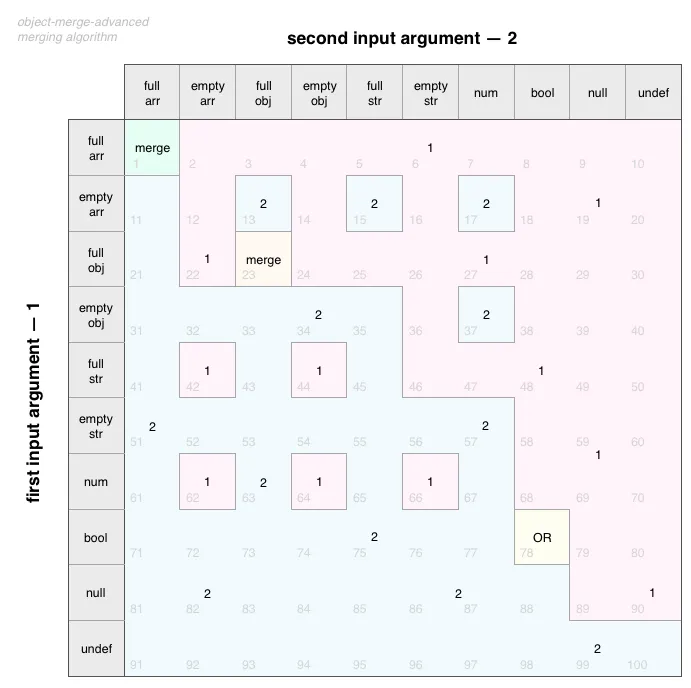这里的大部分例子都过于复杂,我使用了自己创建的TypeScript例子,我认为它应该能涵盖大多数情况(我将数组视为常规数据,仅替换它们)。
const isObject = (item: any) => typeof item === 'object' && !Array.isArray(item);
export const merge = <A = Object, B = Object>(target: A, source: B): A & B => {
const isDeep = (prop: string) =>
isObject(source[prop]) && target.hasOwnProperty(prop) && isObject(target[prop]);
const replaced = Object.getOwnPropertyNames(source)
.map(prop => ({ [prop]: isDeep(prop) ? merge(target[prop], source[prop]) : source[prop] }))
.reduce((a, b) => ({ ...a, ...b }), {});
return {
...(target as Object),
...(replaced as Object)
} as A & B;
};
以下是纯JS的代码,以防万一:
const isObject = item => typeof item === 'object' && !Array.isArray(item);
const merge = (target, source) => {
const isDeep = prop =>
isObject(source[prop]) && target.hasOwnProperty(prop) && isObject(target[prop]);
const replaced = Object.getOwnPropertyNames(source)
.map(prop => ({ [prop]: isDeep(prop) ? merge(target[prop], source[prop]) : source[prop] }))
.reduce((a, b) => ({ ...a, ...b }), {});
return {
...target,
...replaced
};
};
这里是我的测试案例,展示了如何使用它。
describe('merge', () => {
context('shallow merges', () => {
it('merges objects', () => {
const a = { a: 'discard' };
const b = { a: 'test' };
expect(merge(a, b)).to.deep.equal({ a: 'test' });
});
it('extends objects', () => {
const a = { a: 'test' };
const b = { b: 'test' };
expect(merge(a, b)).to.deep.equal({ a: 'test', b: 'test' });
});
it('extends a property with an object', () => {
const a = { a: 'test' };
const b = { b: { c: 'test' } };
expect(merge(a, b)).to.deep.equal({ a: 'test', b: { c: 'test' } });
});
it('replaces a property with an object', () => {
const a = { b: 'whatever', a: 'test' };
const b = { b: { c: 'test' } };
expect(merge(a, b)).to.deep.equal({ a: 'test', b: { c: 'test' } });
});
});
context('deep merges', () => {
it('merges objects', () => {
const a = { test: { a: 'discard', b: 'test' } };
const b = { test: { a: 'test' } } ;
expect(merge(a, b)).to.deep.equal({ test: { a: 'test', b: 'test' } });
});
it('extends objects', () => {
const a = { test: { a: 'test' } };
const b = { test: { b: 'test' } };
expect(merge(a, b)).to.deep.equal({ test: { a: 'test', b: 'test' } });
});
it('extends a property with an object', () => {
const a = { test: { a: 'test' } };
const b = { test: { b: { c: 'test' } } };
expect(merge(a, b)).to.deep.equal({ test: { a: 'test', b: { c: 'test' } } });
});
it('replaces a property with an object', () => {
const a = { test: { b: 'whatever', a: 'test' } };
const b = { test: { b: { c: 'test' } } };
expect(merge(a, b)).to.deep.equal({ test: { a: 'test', b: { c: 'test' } } });
});
});
});
如果您认为我缺少某些功能,请告诉我。

const merge = (p, c) => Object.keys(p).forEach(k => !!p[k] && p[k].constructor === Object ? merge(p[k], c[k]) : c[k] = p[k])- Xaqronhttps://gist.github.com/ahtcx/0cd94e62691f539160b32ecda18af3d6- Nwawel A Iroume